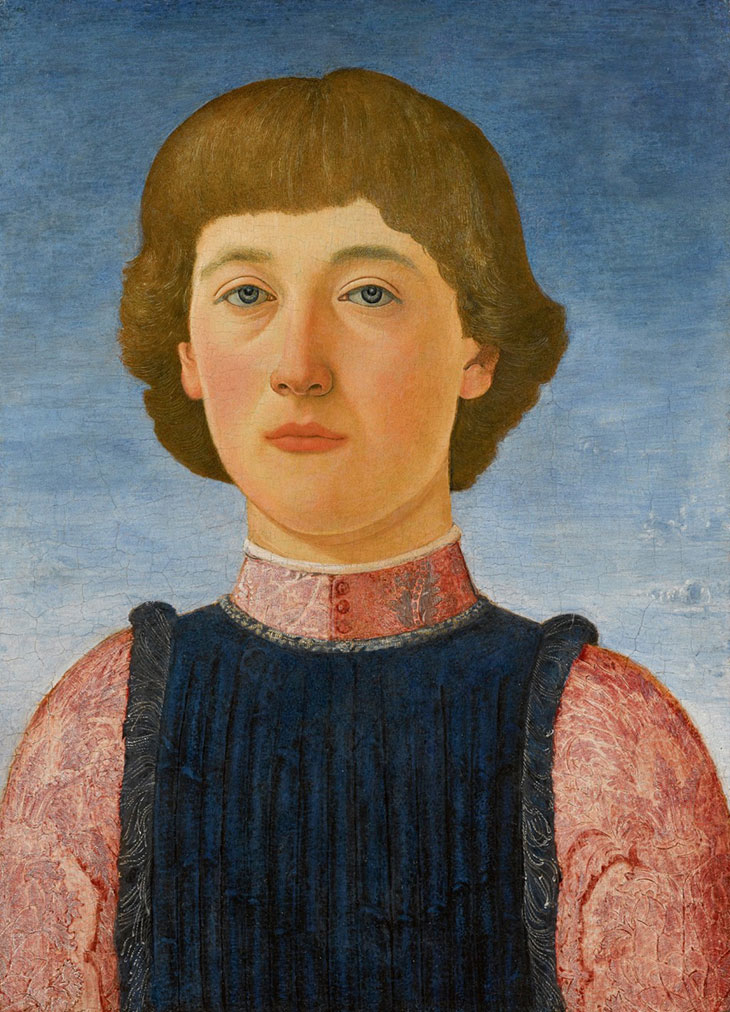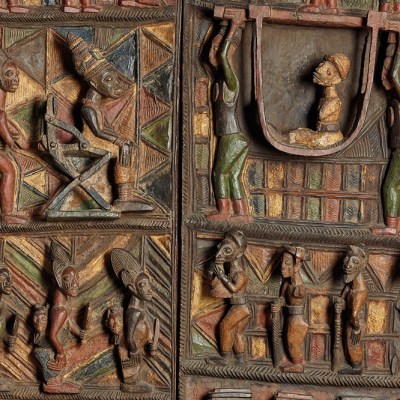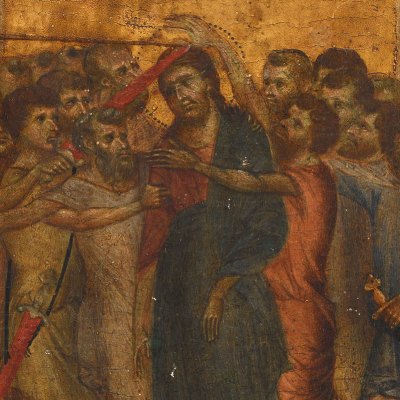Less than two weeks after Sotheby’s sold Botticelli’s Portrait of a Young Man Holding a Roundel for a record $92m, the auction house announced the forthcoming sale of a second 15th-century Florentine portrait. This tempera and oil on panel, Portrait of a Youth, is heralded as a work by Piero del Pollaiuolo (c. 1441–c. 1496). Both are great market rarities, but it is an even more extraordinary coincidence that the two paintings had once hung alongside one another in the study of their former owner, before his collection – largely amassed in the 1930s and ’40s – was dispersed by his heirs in the 1980s. Apparently, Sotheby’s would even have sold the works together this January, if the consigner of the Botticelli had not insisted that no other Florentine Renaissance portrait be offered at the same auction.
Together, the two paintings demonstrate how profoundly the changing critical fortunes of Old Master paintings may affect their commercial value – and how expensive the most desirable examples have become. When last at auction in 1982, the Botticelli had sold to the billionaire American real estate developer Sheldon Solow. He had acquired it from the heirs of someone considerably less rich, an academic and government scientist (admittedly one with a private income). Thomas Ralph Merton (1888–1969), later Sir Thomas, was a physicist most acclaimed for his work in the field of spectroscopy and was the first ‘Q’ of MI6 – in other words, the first scientist and inventor employed, in 1915, by the British Secret Intelligence Service. He was to identify the invisible ink soaked into clothing by German spies, and develop a new means of secret writing as well as a black paint which rendered aircraft almost invisible by searchlight. He also made crucial improvements to radar screens. Interest in pigment, as well as his admiration of the ‘extreme grace and subtlety’ (to quote a profile of Merton published in the New Scientist in 1957) of Italian Renaissance paintings, lay behind many of his acquisitions, most of them dating to 1450–1520 and many of them portraits. Needless to say, he also served on the scientific advisory board of the National Gallery.
Young Man Holding a Roundel (c. 1480), Sandro Botticelli. Photo: courtesy Sotheby’s New York

While the Botticelli was acquired in 1941 for £17,000, it is not known when Portrait of a Youth entered the collection. Its previous owner had bought it at Sotheby’s in 1942 as ‘Florentine School’ but by the time Alfred Scharf catalogued the Merton collection in 1950 it was described as by Piero del Pollaiuolo. Then the real attributional rollercoaster began. In 1973, the American art historian Everett Fahy reattributed it to the less esteemed Cosimo Rosselli, as did Anna Padoa Rizzo in 1977. Moreover, in 1978, Leopold D. Ettlinger pronounced that not only this painting but none of the profile portraits traditionally given to either Piero del Pollaiuolo or his elder brother Antonio were by them, even the famous Portrait of a Young Woman (usually attributed to either Piero or Antonio) in the Poldi Pezzoli Museum in Milan. His only concession was the fairly securely documented half-length, three-quarter view portrait of Galeazzo Maria Sforza.
Unsurprisingly, when Portrait of a Youth was sold at Christie’s in 1985 it bore the attribution of Rosselli. The buyer was the modern art dealer Thomas Gibson, who was in the process of building for himself a small collection of Florentine paintings of the period. He tells me: ‘I had no idea who Cosimo Rosselli was, but I thought it a very beautiful painting and, perhaps subconsciously, was attracted to it because it reminded me of my eldest son. It was extraordinary seeing him sit under it.’ (Gibson had the painting cleaned a few years after he bought it, which accounts for the slight change in hairdo between photographic reproductions.)
A regular house guest at Gibson’s was Everett Fahy. ‘One day, just as he was leaving, he suggested I show the painting to Dr Alison Wright. She came to see it while I was away. Six years later, while walking past the windows of Thomas Heneage’s bookshop in St James’s, I saw her book The Pollaiuolo Brothers open in the window, showing a full-page image of my portrait. It was the first I knew of it. I was pleased with the upgrade but thought nothing more of it until approached two years ago by an auction house who wanted to sell it.’
This is not the place to list the opinion of every scholar – some of whom, like Fahy, changed their minds or doubted the painting’s various attributions without proposing others – or those who did or did not include it their exhibitions or catalogues. In general it used to be the case that all the best paintings produced by the Florentine workshop of the two brothers – second only to that of Andrea del Verrocchio in terms of size, prestige and range of output – were deemed to be by the more admired Antonio, who was better known as a sculptor. Differentiating between the work of the two brothers has always been fraught with difficulty, not least because they are known to have collaborated on some pieces. The scholarly consensus today is that the Portrait of a Youth is a work by Piero.
Portrait of a Youth (c. 1460s/70s), Piero del Pollaiuolo. Sotheby’s, London (estimate £4m-£6m)

Any prospective buyer of Old Master paintings needs to be aware that art-historical scholarship is always in a state of flux, particularly when there is little or no documentation. They would do well to note that certain experts are radical revisionists who like to vastly expand or indeed reduce an artist’s oeuvre. Ettlinger, for instance, tallies 39 in his Complete Edition of works across media by Antonio and Piero while Wright lists 70. It has to be said that within any artist’s given corpus of work, there are some works of art that resemble one another, and others that do not.
When the Merton heirs sold the Botticelli, the highly respected Fahy doubted its attribution, and the painting sold for a disappointing £810,000. The art historian was to change his mind about the Portrait of a Youth, which is fortunate for the sons of Thomas Gibson, who now own the painting. Their father remembers that he paid around £83,000 for his ‘Cosimo Rosselli’ in 1985, while his sons’ Piero del Pollaiuolo is expected to fetch £4m–£6m at Sotheby’s cross-category evening sale on 25 March. Perhaps the Russian buyer of the Botticelli will reunite the two paintings once more.
The Evening Sale at Sotheby’s, London, takes place on 25 March.



